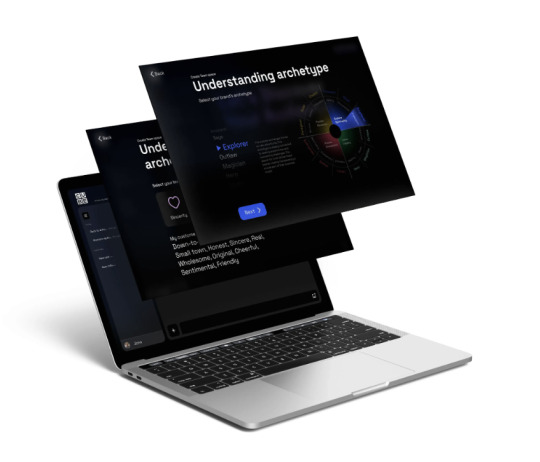#big data marketing
Explore tagged Tumblr posts
Text
Best AdTech Ecosystem Company in Bangalore | Zero Party Data - CUBERA
Cubera leads the AdTech industry by empowering brands with access to zero and first-party data, enabling transformative advertising strategies. Our data-driven approach enhances campaign efficiency, transparency, and performance, making Cubera the go-to platform for innovative advertising solutions. Cubera’s services ensure seamless, effective campaigns. With Omni-Channel Targeting, AI-powered Cohort Analysis, and comprehensive Ad Services, brands can reach their audience across platforms with precision and transparency, maximizing engagement and ROI. Cubera’s powerful suite of tools—Cube, Cubera Identity Graph, Vertex, and Edge—delivers advanced data integration and targeting capabilities. These tools empower brands to execute highly efficient and transparent ad campaigns, leveraging the latest in AdTech innovation.

#data company#best marketing automation software#marketing automation agency in india#big data marketing#zero and first party data
0 notes
Text
Leveraging Big Data for Personalized Marketing Campaigns
Alright, let’s dive into how leveraging big data is not just a smart move for personalized marketing campaigns but practically a necessity if you want to keep your edge in today’s fast-paced market. It's all about understanding and acting on the colossal amount of data at our fingertips, and if you’re not on board yet, mate, you’re missing out big time.
Firstly, big data allows businesses to understand their customers in unprecedented detail. It's like having a pint with each of your customers and getting to know what ticks them off, what gets them excited, and importantly, what will get them to open their wallets. By analyzing customer behavior, preferences, and trends, companies can tailor their marketing strategies to be as individual as the customers themselves. This isn’t just throwing darts in the dark; it’s hitting the bullseye every time.
However, there’s a catch. With great power comes great responsibility. Handling this massive amount of data requires sophisticated tools and, importantly, a savvy team that knows what they’re doing. It’s not just about collecting data willy-nilly; it’s about analyzing it with a fine-tooth comb to glean insights that can inform strategic, personalized marketing moves. If you’re lagging in this department, now’s the time to up your game, unless you fancy being left in the dust by competitors.

Then there’s the aspect of real-time engagement. Imagine being able to adjust your marketing strategies on the fly based on real-time data. That’s the power of big data analytics. It enables businesses to be agile, responding to the latest trends, feedback, and even the current mood of the market. This level of dynamism is crucial for keeping your brand relevant and engaging in today’s ever-changing landscape. If you’re not utilizing this, you’re essentially playing a game of catch-up, and let’s be honest, nobody wants to be that guy.
Finally, leveraging big data for personalized marketing isn’t just a fancy strategy; it’s becoming the bread and butter of successful businesses. The fear of missing out (FOMO) is real in this context. If you’re not personalizing, you’re not only missing out on maximizing your marketing efforts but also risking becoming irrelevant to your audience. In the UK, where brand loyalty can be as fleeting as the weather, staying ahead with personalized, data-driven campaigns is not just good business sense; it’s critical.
So, the bottom line? Get on the big data bandwagon or risk being left behind. It’s a no-brainer, really. Personalized marketing campaigns powered by big data are the future, and the future is now. Don’t let FOMO be your company’s downfall. Embrace the data, make it work for you, and watch as your marketing campaigns hit new heights of success. Cheers to that!
#big data marketing#personalized campaigns#customer analytics#real-time engagement#data-driven strategies#marketing agility
1 note
·
View note
Text
Cómo la interpretación de datos está cambiando el transporte terrestre
Datos. Mucho se habla del abanico de posibilidades que está abriendo el disponer de toda la información para poder interpretarla y cambiar la operatividad y procedimientos corporativos en beneficio de la empresa. Sin duda, las empresas trabajan con estadísticas para poder poner en marcha nuevos procesos que sirvan para mejorar sus resultados y han encontrado en el big data un gran aliado a la…

View On WordPress
#big data características#big data concepto#big data curso#big data ejemplos#big data marketing#big data pdf#big data significado#big data y análisis de datos#bigdatascalability.com#bigdatascalability.com big data
0 notes
Text
got jumpscared by these ‘cus it looks like he is a junior analyst at an investment bank




from mclaren’s ig
#he would be lethal on a Bloomberg terminal#his data-backed rizz would have no limits#that’s why his forehead’s so big it’s full of analytical secrets#Oscar piastri#op81#you don’t get him he’s just at one with capital markets like a gen z dollar sign megamind#wiz.yaps
399 notes
·
View notes
Text
Just saw an ad for an "AI powered" fertility hormone tracker and I'm about to go full Butlerian jihad.
#in reality this gadget is probably not doing anything other fertility trackers aren't already#the AI label is just marketing bs#like it always is#anyway ladies you don't need to hand your cycle data over to Big Tech#paper charts work just fine
9 notes
·
View notes
Text
this is another thing that probably doesnt matter at all but as someone who's interest in vocal synthesis is in large part because of the software and technological aspects, every time i see someone trying to explain the use of deep learning/neural/AI/etc in vocal synthesizers and they say that "the only thing the AI does is help make the pitch transitions smoother" im like white knuckle gripping the table muttering under my breath like no....that is. incorrect.
#there is a big misconception that deep learning synths technologically are the same as concatenative like a series of samples#stretched and stitched and resynthesized together with the 'AI' only referring to an automatic pitch system#and i understand where the misconception comes from. its probably a combination of early marketing of deep learning synths#(am i insane or did ahsoft use to market AI rikka etc as standing for 'automatic intonation'.... did i make that up)#plus trying to separate ai vocal synths from like chatgpt and whatever#BUT. that is not how it works. i think the only synth ive seen that does have that functionality is the very recently released miku nt2?#which i think is still in beta anyway LOL#i thought there was maybe some early synthv banks like the plus banks that did that too initially#but the plus banks are actually AI models trained off of their concatenative samples iirc#but yeah.......... ai voicebanks are just straight up deep learning models of voices with a lot of built in control tools in software#(what notes to sing what parameters to change tone etc)#the vocal provider sings a whole lot. the programmers go in and carefully label all the data. etc etc#they are more ethical than like some of those sketchy song generators in that the data used to train these models is obtained via#licensing and direct input by vocal providers who are getting paid and giving consent etc. but the technology is the same type of thing#i dont even like or care for randomly generated gpt whatever the fuck i find it super uninteresting 99% of the time#but i do love a good ethically made deep learning based vocal synthesizer voicebank and i really dislike technological misinformation#dont stand to close to me or i will start explaining to you about linear predictive coding speech analysis. DO NOT test me
5 notes
·
View notes
Text

🚀 Join the Ultimate Engineering College Quiz Challenge! 🚀🏏
🌟 Test Your IPL Knowledge and Full Stack Development Skills! 🌟
🏆 Prizes Await the Top Scorers! 🏆
Ready to flaunt your smarts? Dive into our dynamic quiz featuring 10 IPL questions and 10 Full Stack Development questions. From cricket trivia to coding conundrums, we've got it all!
🏆 Prizes:
🥇 1st Place: ₹2000 Cash Prize
🥈 2nd Place: Official Merchandise
🥉 3rd Place: Electronic Merchandise
🔗 Ready for the Challenge? Click Here : https://forms.gle/xGrMcnar3xJHS7TS9
to start the quiz and seize your chance to win big! 🚀
Let the games begin! 🎉
2 notes
·
View notes
Text
Czarina-VM, study of Microsoft tech stack history. Preview 1

Write down study notes about the evolution of MS-DOS, QuickBASIC (from IBM Cassette BASIC to the last officially Microsoft QBasic or some early Visual Basic), "Batch" Command-Prompt, PowerShell, Windows editions pathing from "2.11 for 386" to Windows "ME" (upgraded from a "98 SE" build though) with Windows "3.11 for Workgroups" and the other 9X ones in-between, Xenix, Microsoft Bob with Great Greetings expansion, a personalized mockup Win8 TUI animated flex box panel board and other historical (or relatively historical, with a few ground-realism & critical takes along the way) Microsoft matters here and a couple development demos + big tech opinions about Microsoft too along that studious pathway.
( Also, don't forget to link down the interactive-use sessions with 86box, DOSbox X & VirtualBox/VMware as video when it is indeed ready )

Yay for the four large tags below, and farewell.
#youtube#technology#retro computing#maskutchew#microsoft#big tech#providing constructive criticisms of both old and new Microsoft products and offering decent ethical developer consumer solutions#MVP deliveries spyware data privacy unethical policies and bad management really strikes the whole market down from all potential LTS gains#chatGPT buyout with Bing CoPilot integrations + Windows 8 Metro dashboard crashes being more examples of corporate failings#16-bit WineVDM & 32-bit Win32s community efforts showing the working class developers do better quality maintenance than current MS does
5 notes
·
View notes
Text
Week 5 blog post "Saga of Big Data 🙃"
After watching "The Legal Side of Big Data", Maciej Ceglowski's talk and reading "The Internet's Original Sin" . I was intrigued by the complexities surrounding the use of big data in today's business landscape. As a business owner myself, I realize that harnessing the power of big data can unlock numerous opportunities for growth and innovation. However, there are crucial aspects that businesses must be acutely aware of when using big data.
First and foremost, data privacy and security must be at the forefront of any big data strategy. As businesses collect and analyze vast amounts of consumer data, they must ensure strict adherence to applicable laws and regulations. Compliance with data protection laws such as GDPR, CCPA, or other relevant regional laws is not just an ethical responsibility but also vital for avoiding potential legal repercussions and preserving consumer trust.
Transparency is another critical aspect that businesses must prioritize. Consumers have the right to know how their data is being used, stored, and shared. Clear and concise privacy policies and terms of use should be provided, ensuring that consumers can make informed decisions about their data's usage.
Furthermore, businesses should guard against using big data to engage in discriminatory practices. The insights derived from big data must be utilized responsibly and without any bias that could harm certain demographic groups or individuals. It's essential to continuously monitor data usage and algorithmic decisions to avoid reinforcing harmful stereotypes.

On the consumers' side, awareness of the implications of sharing their data is paramount. They should be mindful of what data they provide to businesses and exercise caution when consenting to data usage. Staying informed about privacy settings and exercising their rights to access, rectify, or delete personal data empowers consumers to have control over their information.
As for balancing the opportunities and threats of big data, a multi-faceted approach is necessary. Collaboration between businesses, policymakers, and consumer advocacy groups is key to developing comprehensive regulations that foster innovation while safeguarding privacy. Encouraging ethical data practices and responsible use of big data should be incentivized, and non-compliance should be met with appropriate consequences.
Additionally, promoting data literacy among the general public can foster a better understanding of the potential benefits and risks associated with big data. By educating consumers about data collection practices, they can make more informed decisions about sharing their information and demand greater accountability from businesses.
In conclusion, the world of big data offers immense potential for businesses, but it also poses significant challenges in terms of privacy, security, and ethics. By being aware of these considerations, businesses can navigate the legal complexities and build trust with their customers. Simultaneously, consumers must stay vigilant about their data and support initiatives that strike a balance between seizing the opportunities and mitigating the threats of big data. Only through collective efforts and responsible practices can we harness the full potential of big data while safeguarding individual rights and societal welfare.
2 notes
·
View notes
Text
Global Healthcare Big Data Analytics Market expected to hit USD 99.12 Bn by 2030 from USD 26.87 Bn in 2023 at a CAGR of 20.5 % during the forecast period.
The market dynamics of healthcare big data analytics
In addition to improving clinical results and patient engagement, big data analytics integrates historical and real-time data to enhance patient care and provide professionals with useful information. The healthcare big data analytics market is anticipated to be driven by factors such as the shifting strategies used by healthcare organizations to cut costs and the rise in government programs that encourage the adoption of electronic health records.
#Healthcare Big Data Analytics Market#Healthcare Big Data Analytics Market size#Healthcare Big Data Analytics Market growth#Healthcare Big Data Analytics Market share#Healthcare Big Data Analytics Market demand#Healthcare Big Data Analytics Market analysis
0 notes
Text
Big Data and Data Engineering Services Market is expected to reach USD 240.60 Bn by 2030, at a CAGR of 17.6% during the forecast period.
0 notes
Text
Data Analytic Company in India | Big Data Marketing - CUBERA
Cubera is at the forefront of data innovation, transforming the landscape of big data and marketing technologies. By adhering to a data stewardship model, we empower users to share their information with confidence. Our expertise lies in mastering the nuances of data interpretation, integration, and analysis, ensuring that every dataset contributes to actionable insights and strategic growth.

0 notes
Text
No, we don't need some big company's social media algorithm to connect on the internet.
I remember when chronological went away on a lot of platforms and if anyone tells you that you can't have a social life online without having social media with algorithm control and target marketing and data collection, etc. etc. that doesn't make sense because it absolutely existed, still does exist, and can exist.
I'm not saying we all have to go back to RSS feeds, but I made some good connections for many years through blogging. One such person I have been thinking about, passed away this year. I only exchanged emails with him a few times a year in the past decade, but followed his blogs for about 20 years.
A person asserting that the internet and social connections depend upon social media as it exists might be a PR mouthpiece for big tech platforms.
And yes, I have a particular influencer in mind, but they are not the only one, and it's someone who peppers this nonsense into their content and rhetoric, which is largely stuff that appeals to an audience of people who this person knows they depend on social media and online connections the most, and I think that's particularly shameful.
Email still exists by the way. Just sayin'.
The postal service still exists too... at least for now.
#email#online#online community#online communication#social media#the algorithm#data harvesting#target marketing#social media manipulation#misinformation#cognitive warfare#propaganda#industry#tech industry#big tech#big money#blogging#RSS#shills#propagandists#influencers#journalists#pundits#tech won't save us#paper is the technology of the future#usps#postal service#post office#mail#save the post office
0 notes
Text
Understanding the Power of Location Analytics

Location analytics is the process of analyzing geospatial and geographic location data to gain meaningful business insights. It involves collecting and interpreting location-based data from various sources like GPS, IP addresses, and zip codes to uncover trends, patterns and relationships. Location Analytics enables businesses to understand customer behaviors based on where they are, where they go, and how often they visit certain places. Location data aids geotargeted online ad campaigns and personalization. Marketer can reach out to customers relevant to their location context and stage of journey. Geo-fencing ensuresRight message is served to Right person at Right place and time. Get more insights on, Location Analytics
#Coherent Market Insights#Transportation and Logistics#Government and Defense#Big Data Analytics#Tourism and Hospitality
0 notes
Text

#Big Data Analytics in Retail Market#Big Data Analytics in Retail Market Share#Big Data Analytics in Retail Market Size#Big Data Analytics in Retail Market Research#Big Data Analytics in Retail Industry#What is Big Data Analytics in Retail?
0 notes
Text
Big Data in Agriculture Market Size, Share, Analysis, Growth
0 notes